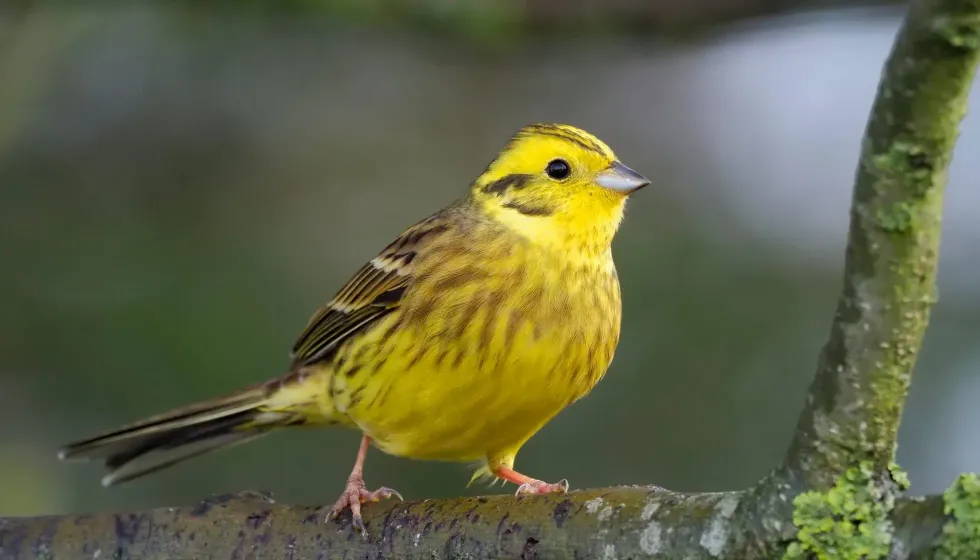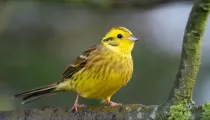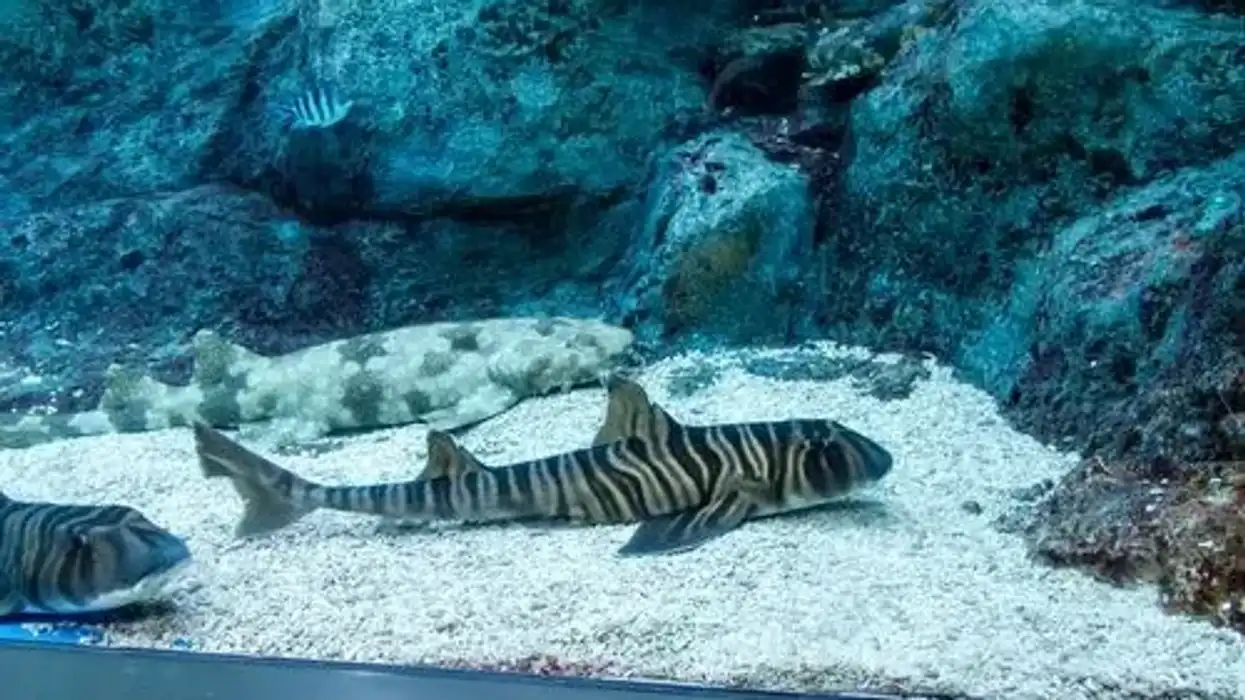The yellowhammer is a bird found in a variety of habitats such as forest tundras, clearings, woodlands, and clearing fields in a wide range of countries in the continent of Europe and Asia. It has also been introduced in the country of New Zealand.
It is known for forming mostly monogamous mating pairs and is also seen alone or in small groups.
It may live for 3-13 years in its wild habitats. The male is way more brightly colored than females and is aggressive in establishing territory.
The male also performs displays to attract females.
The yellowhammer is referenced a lot in popular culture, perhaps most famously by Enid Blyton, who said about the song of the yellowhammer, 'a little bit of bread and no cheese'.
The yellowhammer is sometimes confused with the Northern flicker woodpeckers of the USA since it is also known as yellowhammer in the USA, and being the official state bird of the state of Alabama.
For more relatable content, check out these Atlantic canary facts and Canyon wren facts for kids.
Yellowhammer Interesting Facts
What type of animal is a yellowhammer?
The yellowhammer is a bird.
What class of animal does a yellowhammer belong to?
The yellowhammer species belongs to the Aves class of animals.
How many yellowhammers are there in the world?
There are 40,000,000-69,999,999 mature individuals of the yellowhammer species in the world.
Where does a yellowhammer live?
The yellowhammer is a widely distributed bird in the continents of Europe and Asia and the country of New Zealand.
The list of countries it is found in is extensive, and it includes Ireland, Britain, Isle of Man, southern parts of Wales, western and northern parts of England, south-central and eastern regions of Siberia, north-central parts of Mongolia, the eastern Black Sea, the Caucasus, Iran, Iraq, Levant, northwestern Russia, the Balkans, and many more nations.
What is a yellowhammer's habitat?
The yellowhammer tends to avoid forests that are dense, instead, it inhabits woodlands, scrublands, heaths, and orchards. It usually exists between elevations of 1,969-2,953 ft (600-900 m).
It also favors habitats like forest clearings, high slopes, trees, and cultivated areas in its southern range, close to 6,562 ft (2,000 m). The yellowhammer has also been observed in the true tundra and forest-tundra in its northern range.
The yellowhammer is also known to frequent cereal fields, agricultural fields, and pastures in winter. And in the autumn, flocks of yellowhammer birds are known to perch and roost in marshes, small trees, and scrubs.
Who do yellowhammers live with?
The yellowhammer either lives alone, in pairs, and in flocks. It shows territorial behavior when establishing its place and territory. After forming pairs, it shows monogamous behavior, may sometimes breed with other individuals. It is only a semi-migratory species but does so in small flocks.
How long does a yellowhammer live?
A yellowhammer life may last for 3-13 years.
How do they reproduce?
The yellowhammer breeding season usually begins around April, but high altitude ones may start as late as September. And in the New Zealand habitats, the yellowhammer breeds from October to March. Two to three broods are produced in a single season.
The male aggressively establishes territory and performs a twisting display to attract females. Females tend to go with the more colorful male birds and the pairs formed are largely monogamous. The pairs are often seen together, feeding on seeds and other foods.
Female yellowhammers are responsible for building nests using any materials close to the nest site like grass, stems, moss, and leaves. The cups of the nests are lined with soft grass, rootlets, and animal hair. The nest sites used are small trees, bushes, and clumps of grasses.
A female yellowhammer lays around two to six eggs in a single brood. The eggs are white and pinkish with dark spots. Incubation duties are handled by the female for around two weeks during which they develop an incubation.
The male feeds the female during this time and both parents feed the juvenile chicks. It takes the chicks 11-13 days post-hatching to fledge. In western Siberia and the Urals, yellowhammers sometimes hybridize with the pine bunting.
What is their conservation status?
The conservation status of the yellowhammer bird species according to the International Union for Conservation of Nature is 'Least Concern'.
Yellowhammer Fun Facts
What do yellowhammers look like?
The adult male yellowhammer has a yellow head with dark ****s around the yellow crown. It has brownish cheeks with dark edges on the ear coverts.
It also has a chestnut **** and a brown back. The upper parts have black streaks and are an overall warm brown color.
The upper tail-coverts and the **** have way less streaking and are rufous-chestnut in color. The upper wing has yellow tones on its primary feathers and the outer rectrices of the tail have some white.
The throat and the chin are both a pale yellow. The other underpart areas are yellowish and dark-streaked on the rear flanks as well as the ****. There is also an olive-rufous band on the ****, with more rufous on the sides of the **** as well as the upper flanks.
The yellowhammer also has a greenish eye **** that curves down the ear coverts' rear till the rear lower cheeks. The nape of the yellowhammer is greenish-gray and yellow.
The eyes are a strong brown or black and the bill is gray-blue. The female yellowhammer tends to be paler than the male with the head being brown and olive.
The feet and the legs of the yellowhammer are brownish. The juvenile of the species has heavier underparts streaking but paler colors than the grown female.

How cute are they?
The yellowhammer is a very cute bird. It is a beautiful yellow color with a brown back and the dark streaks on its crown make it look very smart.
Adorned with different shades of brown and black, the yellowhammer holds a certain allure in culture. It also sings a sweet song. There are two towns in Dorchester named after the bird, namely Yelloham Hill and Yellowham Wood.
A Robbie Burns poem, called 'The Yellow, Yellow Yorlin', is named after the bird. The writer John Clare has also alluded to the beauty of the yellowhammer in two of his works calling it a bird with a 'head of solid gold and a yellow ****'.
How do they communicate?
Yellowhammers communicate via songs and calls. They are often seen singing from their treetop perches or fence posts. The contact call sounds like 'twick' or 'twitic'. The call for alarm is a thin 'see'. The common call from the ground or in-flight is a metallic 'tzit'. And the flying flocks collectively give a liquid 'trrp-trrp' call.
The song of the yellowhammers is made up of insect-like notes which are high-pitched and rapid. The song is a 'tee-tee-tee-tee-tee-tee siiiiiiiiiiiiiiiiiiiiii'.
The writer Enid Blyton has famously called the yellowhammers' song 'a little bit of bread and no cheese'.
How big is a yellowhammer?
Yellowhammers are 6.3-6.7 in (16-17 cm) in length and have a wingspan of 9.1-11.6 in (23–29.5 cm), which makes them about two times as big as the verdin.
How fast can a yellowhammer fly?
Like most birds, yellowhammers may fly at speeds of 25 mph (40.2 kph).
How much does a yellowhammer weigh?
A yellowhammer weighs 0.7-1.3 oz (20-36 g).
What are the male and female names of the species?
Males and females of yellowhammers are not referred to by any specific names. However, being birds, the males may be called '****' and females may be called 'hens'.
What would you call a baby yellowhammer?
A baby yellowhammer is called a chick.
What do they eat?
Yellowhammers feed on a varied diet consisting of seeds, invertebrates, grasshoppers, moths, flies, caterpillars, aphids, bugs, beetles, bugs, spiders, cicadas, and insects.
Yellowhammers themselves get preyed upon by sparrowhawks, northern goshawks, hobbies, lesser-spotted eagles. The nest is often raided to steal eggs by Eurasian jays, crows, and Eurasian magpies. Also, their chicks sometimes come under threat from mice and rodents.
Are they dangerous?
No, yellowhammers are not dangerous animals at all.
Would they make a good pet?
Yellowhammers are not widely known to be taken as pets. They are wild birds that have widely spread populations over their extensive range in various areas.
Their population shows a declining trend due to human interference via farmland management, agricultural efficiency, cereal crop reduction, and pesticide use. Efforts should be taken to address these issues and to restore the habitats in place.
Did you know...
The English yellowhammer name may come from the German word 'ammer', which is just another term for bunting birds. Since it is a yellow bunting bird, hence the name yellowhammer.
Yellowhammers are buntings and not woodpeckers or finches. Buntings belong to the Emberizidae bird family, finches belong to the Fringillidae bird family, and woodpeckers belong to the Picidae bird family. Although, the northern flicker woodpeckers of the USA are also termed yellowhammers sometimes.
Northern flicker birds are known for feeding on ants, and in doing so utilize the formic acid from ants to preen. This also helps them to avert parasites.
The yellowhammer has a total of three subspecies, E.c. caliginosa, E.c. erythrogenys, and E.c. citronella. They show slight variations in habitat range and coloration.
Why is Alabama called yellowhammer?
Alabama is called the 'yellowhammer state' but it is not for the yellowhammer bird, but for the 'northern flicker bird' or 'the common flicker bird', which is also called the yellowhammer in the US, North America, and Alabama. The northern flicker bird is a woodpecker that is the state bird of Alabama.
The term was originally given to the confederate soldiers during the Civil War of America. It comes from the yellow color on the uniforms of the troops.
Post-war, veterans wore yellowhammer feathers on their uniforms, coats, and hats. Other names for Alabama include 'the cotton state' and 'the heart of dixie'.
What sound does a yellowhammer make?
The song of the yellowhammer is a 'tee-tee-tee-tee-tee-tee siiiiiiiiiiiiiiiiiiiiii' sound. The contact call is 'twick' or 'twitic'. The alarm call is 'see' and the in-flight call is 'tzit'.
Here at Kidadl, we have carefully created lots of interesting family-friendly animal facts for everyone to discover! For more relatable content, check out these great black hawk facts or the red-footed **** fun facts pages.
You can even occupy yourself at home by coloring in one of our free printable ovenbird coloring pages.









